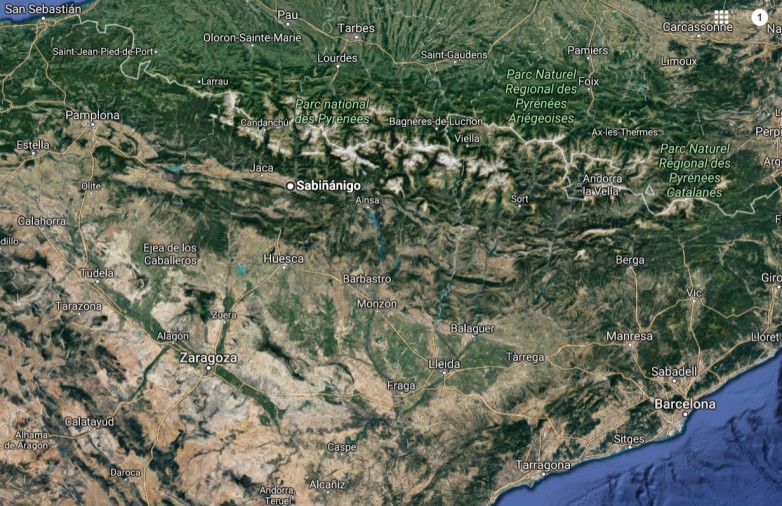
September 18
The battle of El Mazuco continues along the summits of the Peña Blancas. The German Condor Legion planes are brought in now the heavy fog has cleared, to assault the Republican hold over the Bedón river, which runs from the village of Vibaño right of the sea, only 12 kilometres away from the front line now. The Condor Legion bombed the Bedón river region in three waves from midday with both Fiat fighters and German Junkers. Sixteen battalions of Nationalists also stormed the ground with machine guns and grenades to fight the Republicans back further. The continuous onslaught will continue for four days.
September 22
The constant aerial bombardment has finally taken its toll on the El Mazuco Republicans. The crucial El Mazuco pass area is finally captured by the Nationalists and all the summits of the Peñas Blanca are in Nationalist hands. The death toll on both sides is unknown out in the inhospitable landscape. The Nationalists have been vastly slowed by the assault on El Mazuco, and had expected to be in Asturias much sooner. The Republicans west in Asturias have had precious time to regroup and prepare for the Nationalist invasion.
Those who have attempted to defend the El Mazuco pass are considered heroes after losing their honour in Santander, even though they have ultimately lost. Gijón in Asturias is the last Republican stronghold in northern Spain, and the Nationalists can now move into the area, as well as extra Nationalists being brought in from León the south.

September 22
The Battle of Sabiñánigo begins in the Aragon region. The Republicans 27th and 43th divisions go north from the Huesca region to the town of Sabiñánigo. They have around 14,000 men and heavy artillery. The Nationalists have 10,000 men in the area, the 1st Brigade and the 50th National Division. They are spread out over the region, as far north as Biescas 14 kilometres from Sabiñánigo. The battle marks the start of a slow-moving ground battle which will last seven weeks, and cost 6,000 lives for little gain for either side.

September 27
The Nationalist which claimed the Peñas Blancas and the El Mazuco pass are now making steady process east to take Gijón and Asturias. They take the town of coastal Ribadesella, some 30 kilometres west from the mountain battles. Combined with Nationalist forces marching both from León, the city of Gijón, 90 kilometres west of Ribadesella, is preparing for battle.
- October 1
Nationalist northern troops capture the town of Covadonga, 27 kilometres inland from Ribadesella, and only 75 kilometres southeast from Gijon. No area in the Asturian region has the men to repel the invading Nationalists and there is no opposition to the men taking the area.

The UGT Unión General de Trabajadores, worker’s trade union, expels Francisco Largo Caballero, one-time Prime Minister of Spain. Caballero has been travelling through Spain holding allies against Communists and Stalinism. Current Prime Minister Jose Negrín makes no attempted to save Caballero, and Spanish parliament fires all parliament members with close ties to Caballero. While the Communists are strong Spain, they are not well liked among the vast majority of people in Republican or Nationalist areas. But the strength of the Communists, especially in the Barcelona area, cannot be defied.
October 5
American president Roosevelt denounces fascist aggression in Spain, though he does not outright denounce Franco, or support the Republican cause and government in any way. While many nations accept that what is happening in Spain needs to end, no one is prepared to step in and help. The rise of fascism in Nationalist Spain is denounced, as the rise of the Communism for the Republicans cause, leading many nations to steer clear of the war entirely, which shall come back to do harm, as Hitler and Mussolini could have been crushed before the start of WWII.
~~
This is not a detailed analysis, just a highlight (lowlight?) of the week’s events. Things get lost in translation – Feel free to suggest an addition/clarification/correction below. The more the world remembers, the better. All photos and captions are auto-linked to source for credit, and to provide further information.
